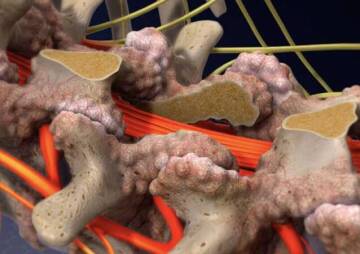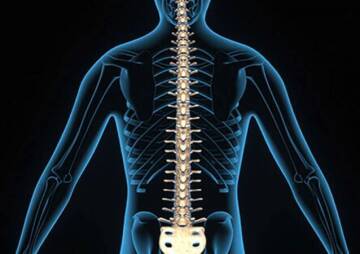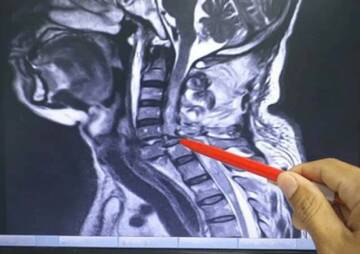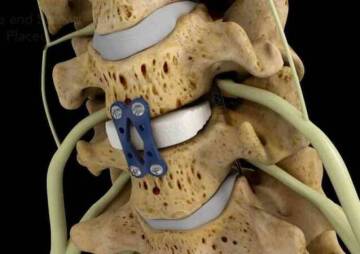-
فئة
Craniomaxillofacial Surgery
Orthopedic Surgery
Spine Surgery
Orthopedic Implants
Hip Surgery
Knee Surgery
Pectus Excavatum
Bone Graft
Disinfectants
Healthcare
Laminectomy, a method of reducing spinal cord compression

Laminectomy surgery enlarges your spinal cord to relieve compression. Laminectomy relieves chronic pain caused by spinal cord compression. In this article, you will learn more about laminectomy.
Laminectomy is known as a decompression surgery. This surgery enlarges your spinal cord to reduce the compression on your spinal cord or nerves. Doctors recommend laminectomy surgery when conservative treatments such as medication, physiotherapy, or injections can’t relieve the symptoms, and they become worse.
Read more about laminectomy in this article.
What is a laminectomy?
Laminectomy is a type of surgery in which the surgeon removes part or all of the lamina of the vertebrae. But what is a lamina and why is it removed?
The lamina is the back part of each vertebra that forms the back wall of the spinal cord. The spinal cord passes through this cord in the center of the vertebrae. In certain conditions, the spinal cord may be compressed and causes pain in the spinal cord.
Compression on the spinal cord is usually happened by an overgrowth of bone inside the spinal cord, which may occur in people with osteoarthritis in their spine. This overgrowth is sometimes called bone spurs, which is a natural side effect of aging in some people. Other factors, such as traumatic injury, disc herniation, or tumors, can also cause spinal cord stenosis. A laminectomy reduces the compression of the spinal cord and spinal nerves by opening the spinal cord.
This surgery is also known as a decompressive laminectomy. Laminectomy has significant risks and potential complications. However, it will be done if other medical treatments don’t work.
Laminectomy is the name given to different types of vertebral resection surgeries to reduce compression on the spinal cord. This type of surgery has two main parts. Laminotomy is a term for removing part of the lamina and laminectomy is a term for removing the entire lamina.
Laminectomy surgical procedures
Laminectomy is performed in one of the following ways:
Microlaminectomy
It is a minimally invasive method. This surgical procedure is performed with special arthroscopic instruments. The instruments are inserted into the body through a small incision in the back or neck. Internal parts of the body are displayed on the monitor screen with an arthroscope camera. The surgeon performs the surgery according to the images he sees. Microlaminectomy has a faster recovery and less pain due to less damage to tissues and organs it causes.

Open surgery
In open surgery, depending on the location of the spinal cord injury, the surgeon makes an incision in the lower back, back, or neck. The length of this incision depends on the number of vertebrae that need treatment. The tissues and muscles are set aside so that the surgeon can access the area. This type of surgery takes longer to heal and recovery time after surgery is longer. But in some cases, this surgery is more effective than microlaminectomy.
Types of surgery with laminectomy
Laminectomy is divided into four types, cervical, thoracic, lumbar, and sacral, depending on the situation in which the operation is performed.
What is cervical laminectomy?
A cervical laminectomy is a procedure performed to reduce compression on the spinal cord and nerves behind the neck. This procedure involves removing the bony roof of the spinal cord as well as any soft tissue that puts compression on the spinal cord.
A cervical laminectomy may take one to three hours. This operation is a major spinal surgery in a sensitive area on the spine. It's usually performed in cases where the symptoms of the disease are not relieved by non-invasive methods. In most cases, the patient is first advised to rest, use painkillers, undergo physical therapy, or undergo epidural injections. If the pain does not decrease, cervical laminectomy is performed.
Sometimes the pain is accompanied by weakness, numbness of the limbs, murmurs, difficulty in walking, and loss of bladder and bowel control. In these cases, cervical laminectomy is necessary.

What is a thoracic laminectomy?
When spinal laminectomy is performed on the upper and middle part of the lower back, it is called a
thoracic laminectomy. The most common reason for this procedure to be done is to remove the tumor or reduce the compression on the spinal cord.
Certain tumors can form inside the spinal cord. For example, nerve sheath tumors, meningiomas, astrocytomas, ependymomas, and hemangioblastomas. The surgeon needs to perform a breast laminectomy to access and remove the tumors.
Spinal cord stenosis due to its narrowing is another reason for thoracic laminectomy. During the operation, the compression on the spinal cord in the thoracic lumbar region decreases.

What is Lumbar Laminectomy?
Lumbar laminectomy is a type of surgery performed on the lower part of the spine to reduce compression on one or more nerve roots.
Lumbar laminectomy is often performed to relieve the effects of spinal stenosis. Spinal cord stenosis may be due to the following:
- Shrinkage of the spinal discs and swelling of the bones and ligaments, both of which occur with aging.
- Osteoarthritis of the spine, which is more common in older adults.
- Congenital or birth defects, such as abnormal spinal growth
- Paget’s disease, a condition that Bones grow improperly there.
- Achondroplasia, which is a type of dwarfism.
- Tumors in the spine
- Impact injury
- Disc herniation

What is a sacral laminectomy?
Removal of the dorsal lamina between the pelvis and femur (sacral spine) is known as a sacral laminectomy. This surgery reduces the compression on the spinal nerves.
How is laminectomy performed?
For this operation, first general anesthesia is performed and then the skin in the desired area is cleaned with disinfectant solution. An incision of five to seven centimeters in that area is made vertically in the midline.
The muscles behind the spine are gently detached from the spinal cord bones, and the bony roof above the spinal cord and any soft compressive tissues are carefully removed using small drills and other fine tools. Any nerve fibers under compression is identified and decompressed.

In some cases, fusion surgery is used to stabilize the spine. X-rays are then used to check the alignment of the spine and the correct placement of the bolts required for fusion.
The surgeon also removes any bone spurs and bone fragments that may be pressing on the nerve fibers. In the final stage, the surgical site is closed with sutures or staples.
What are the risks of a laminectomy?
Spinal surgery with laminectomy can have specific risks. Including:
- Spinal nerve damage
- Unsuccessful surgery that can lead to continued pain after surgery.
- Back pain, especially after spinal fusion
- Infection at the surgical site or vertebral bones

- Spinal cord fluid leakage due to rupture of the membrane that surrounds the spinal cord.
- Also, some risks threaten the patient in all surgeries. Including blood clots in the legs and pulmonary embolism, respiratory problems, infection, blood loss, heart attack, stroke, and drug reaction
How long does it take to recover from laminectomy?
This time depends on the amount of surgery and the patient's condition. If the laminectomy is minor, the patient will usually be able to do light housework and work not requiring to bend after a few days to a few weeks. But if this operation is accompanied by fusion; Recovery time is longer. It may take between two and four months.
As soon as the doctor sees suitable, he or she will prescribe light walking and physical therapy exercises to speed recovery. In any case, you cannot be sure of your full recovery before six weeks.

Long-term prospect of laminectomy
Laminectomy often relieves the symptoms of spinal stenosis. However, it cannot be said that this surgery prevents spinal problems in the future or even relieves the pain completely. For this reason, the possibility of other spinal problems should never be ignored and the principles of safety and caution should always be observed.






